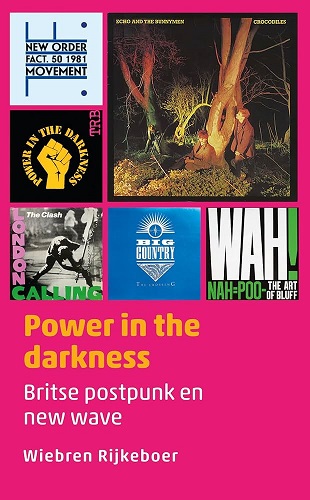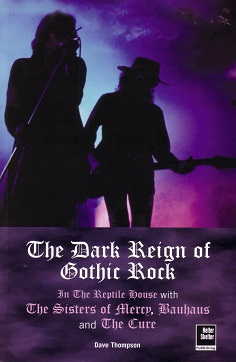
Power in the Darkness: Britse Postpunk en New Wave
Wiebren Rijkeboer
213 pages
published in 2022
If you judge a book about music on how much it makes you want to listen to the music it’s talking about, Power in the Darkness was a huge success. After reading it I spent weeks going through my post-punk and new wave album, while also looking for some of the artists that were new to me Wiebren championed in its pages. Not that I needed much encouragement: this is part of the music I grew up with, background noise growing up as a kid in the eighties. If I wasn’t old enough nor cool enough to have bought the singles myself, at least I knew them from their appearances on the Dutch equivalent of Radio 2. Wiebren Rijkeboer, born in 1959, a decade and a half before me, on the other hand is old enough to know the bands covered first hand and that comes through in the book.
Power in the Darkness‘s structure is quite simple: a short introduction that lays out the parameters of the project, followed by a chronological look at some eighty-five post-punk and new wave albums released between 1978 and 1993, each by a different band. It starts in 1978 with the Buzzcocks’ Another Music in a Different Kitchen because punk’s definitively dead by then and ends in 1993 with East Village’s Drop Out for less obvious reasons, roughly where Britpop took over. Geographically Wiebren’s focus is limited to the UK and Ireland (and forgive the Dutch habit of calling this all British in the title). He also limits himself to bands, so no Elvis Costello or Ian Dury here. This is very much a personal project, a sampler of what post-punk and new wave have to offer, not the ultimate guide. As you may expect, the emphasis is on the years 1979 to 1982, with a long tail through the rest of the eighties and early nineties.
Each album discussion is only a few pages long, in which Wiebren introduces the band and context in which it was made, gives a quick impression of what it sounds like and takes a quick look at the band’s other noteworthy releases. Most of postpunk’s usual suspects are there: Buzzcocks, the Fall, Joy Division, Wire, Gang of Four, but there are also some much less well known bands mentioned. Doll by Doll, The Records, Cowboys International, Random Hold: all new to me. Always a good thing when a book can introduce you to new to you artists and give you enough context to know whether or not you’ll enjoy them.
Genre wise, the boundaries of post-punk are not very strictly guarded here. A lot of gothic acts like The Mission, Sex Gang Children and Sisters of Mercy creep in here as well, though Wiebren calls them ‘positive punk’ which, no. Post 1985 as well what makes the featured acts post-punk or new wave becomes a bit less clear too. The Stone Roses or Primal Scream don’t quite fit in here, if obviously inspired by the earlier bands.
In all, if you can read Dutch and have a limited knowledge about post-punk and the period in which it was dominant, this is a good introduction. There are no obvious omissions nor anything included that clearly shouldn’t have been. You could listen to worse music than the albums featured here.


